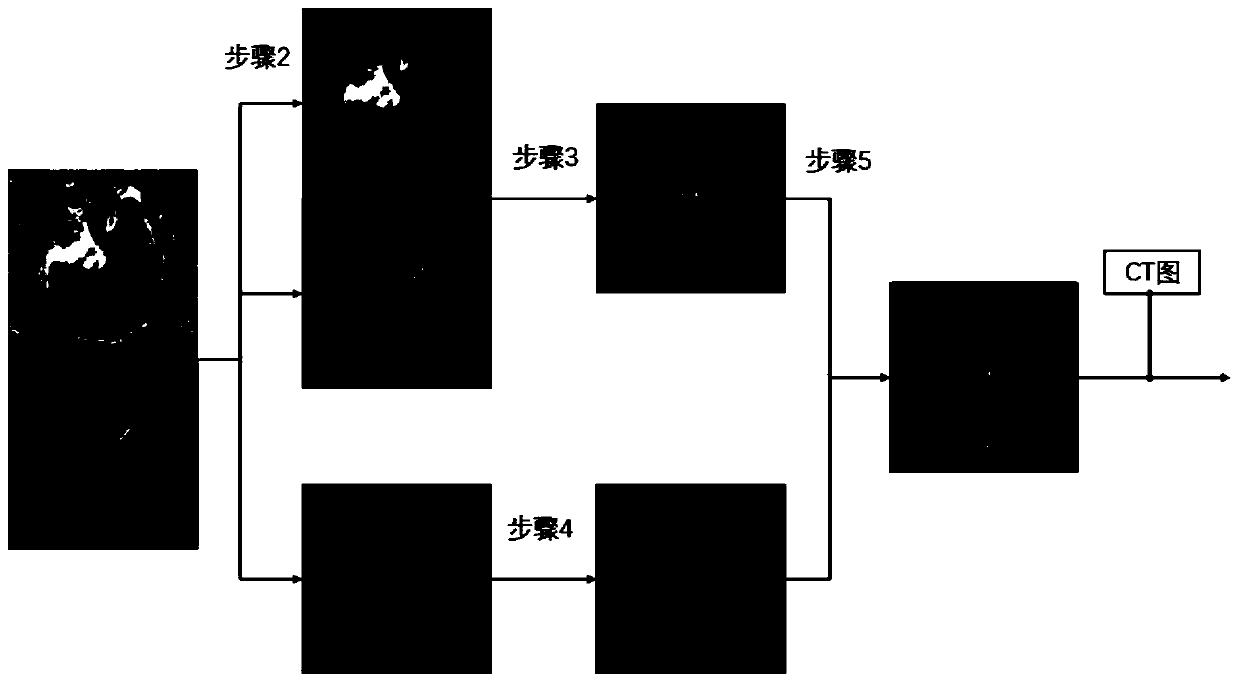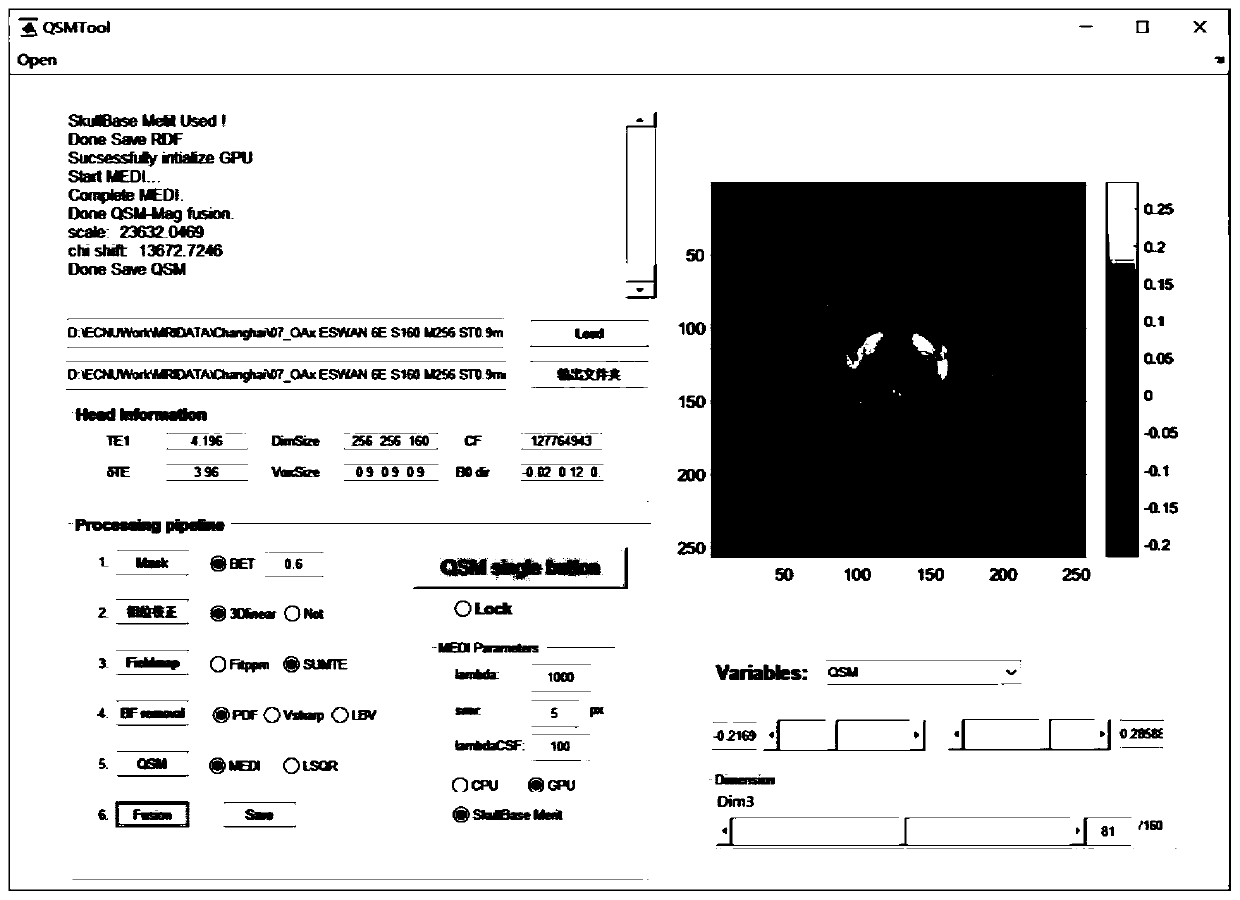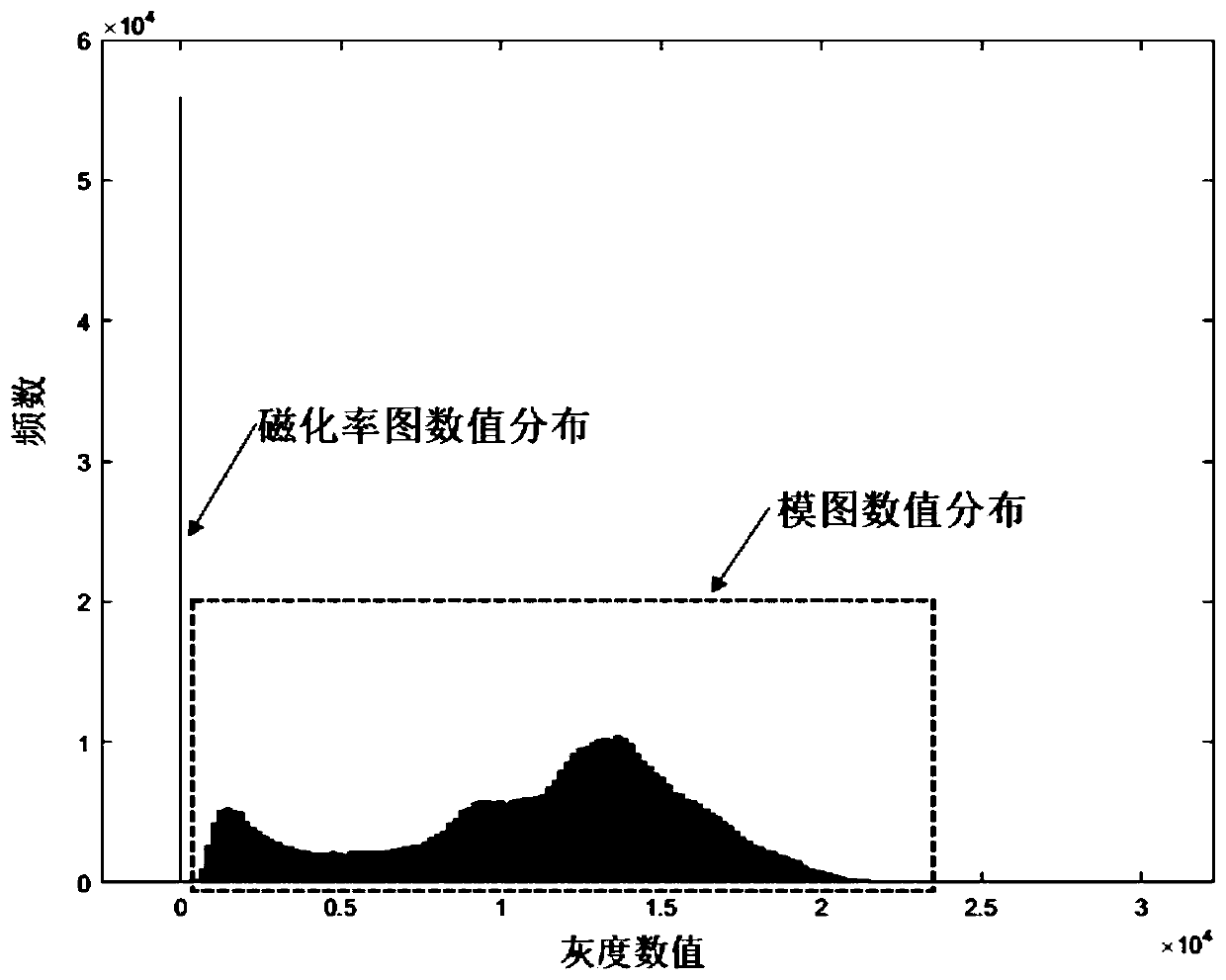Method for carrying out deep brain nucleation positioning by utilizing quantitative magnetic susceptibility graph
A quantitative magnetic susceptibility and depth technology, applied in image analysis, image enhancement, image data processing, etc., can solve the problems of blurring the anatomical structure of the nucleus, affecting the accuracy of the nucleus boundary, and the outline of the nucleus is not clear enough, so as to facilitate the promotion. Effect
- Summary
- Abstract
- Description
- Claims
- Application Information
AI Technical Summary
Problems solved by technology
Method used
Image
Examples
Embodiment
[0045] This example is an example of the head data of the subject. The data was collected in a general electric 3.0T magnetic resonance imaging system and obtained by bipolar gradient multi-echo sequence acquisition. Scanning parameters: TR = 28ms, TE1 = 4.2ms, ΔTE = 3.96 ms, the number of echoes is 6, the bandwidth is 278Hz / px, the flip angle is 12 degrees, and the voxel size is 0.9*0.9*0.9mm 3 , the matrix size is 256*256*160, the field of view size is 240*240mm 2 , with an acceleration factor of 2.
[0046] Image reconstruction includes the following steps:
[0047] Step 1: export the mode diagram and phase diagram of the 6 echoes from the magnetic resonance imaging system to the PC;
[0048] Step 2: Take the root mean square of the 6 echo patterns to obtain the mean pattern, and use the BET algorithm to generate the head mask with the skull removed; multiply the mask with the pattern and the phase map respectively to obtain The mask and phase map without the skull; inve...
PUM
 Login to View More
Login to View More Abstract
Description
Claims
Application Information
 Login to View More
Login to View More - R&D
- Intellectual Property
- Life Sciences
- Materials
- Tech Scout
- Unparalleled Data Quality
- Higher Quality Content
- 60% Fewer Hallucinations
Browse by: Latest US Patents, China's latest patents, Technical Efficacy Thesaurus, Application Domain, Technology Topic, Popular Technical Reports.
© 2025 PatSnap. All rights reserved.Legal|Privacy policy|Modern Slavery Act Transparency Statement|Sitemap|About US| Contact US: help@patsnap.com



